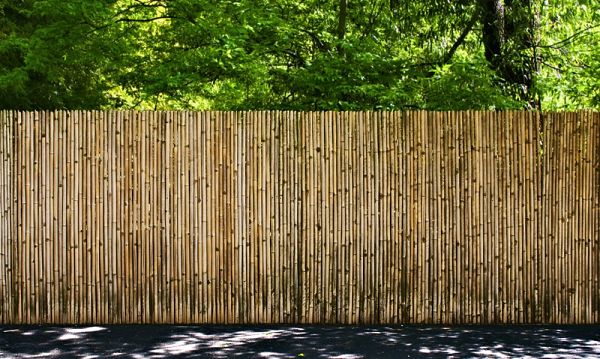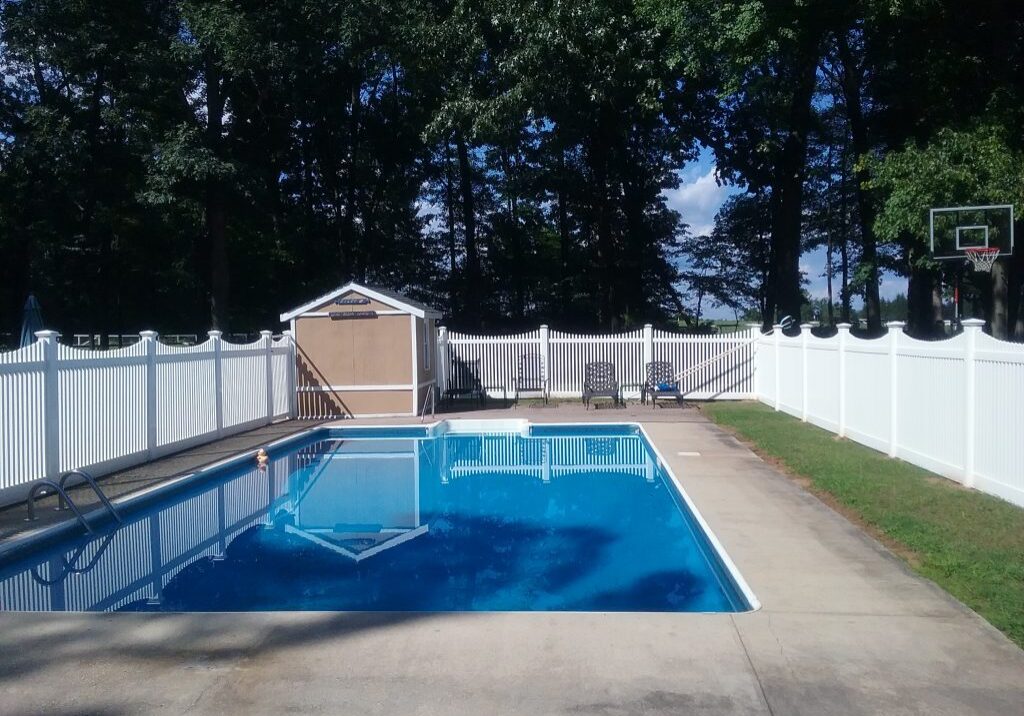All Categories
Featured
From heavy rainfall and snow to intense sun and wind, weather-related damages is one of the most usual causes of fence deterioration. While you can't control the climate, there are a number of means to protect your fence from the destructive effects of weather condition and guarantee it lasts for years to come.
Wooden Fences: While wooden fencings are a classic option, they are very at risk to dampness and insects. To make a timber fencing more sturdy, decide for pressure-treated lumber, cedar, or redwood.
Plastic Fences: Vinyl fences are very long lasting and require little upkeep. They are immune to fading, cracking, and warping, making them perfect for regions that experience extreme sunlight, rainfall, or winter. Plastic also won't rot or bring in insects, offering lasting security without the requirement for continuous upkeep.
Metal Fencings: Wrought iron and light weight aluminum fencings are outstanding selections for their toughness and resistance to wind and moisture. They are at risk to rusting over time, specifically if revealed to regular rains or humidity. Choose powder-coated or galvanized metal fences to lessen the risk of rust.
![]()
Compound Fences: Integrating timber fibers and plastic, composite fencings are immune to decomposing, fading, and bug damages. They use the look of timber with less upkeep, making them a suitable option for locations with variable weather.
![]()
Wood Fencings: A great top quality timber sealer or tarnish is essential to protect your fencing from the aspects. Be certain to reapply the layer every couple of years to keep your fencing in top problem.
Plastic Fences: While vinyl is low-maintenance, you can still protect it additionally by applying a UV protectant. These coatings aid protect against discoloration brought on by long term sun exposure. In addition, use vinyl-specific cleaners to keep the surface area without discolorations or dirt buildup.
Steel Fences: To safeguard metal fences from rust and corrosion, think about applying a rust-inhibiting primer adhered to by a safety paint created for exterior use. Preferably, powder layer gives a long-lasting and sturdy finish that can endure rough climate.
Wooden Fencings: Clean your wooden fence with a stress washing machine or a soft towel and light cleaning agent. Make certain to remove leaves, mold, and dirt that can hold dampness versus the timber. Inspect the fence on a regular basis for indications of rot, fractures, or insect infestations. Early detection can avoid little problems from developing into expensive repair services.
Plastic Fences: Plastic fences are very easy to tidy with soap and water. For tougher stains, you can make use of a light bleach solution or a vinyl cleaner to restore the fencing's appearance. Don't forget to inspect for any fractures that may allow water in, bring about further damage.
Metal Fencings: Tidy steel fencings with a soft towel to get rid of dust, rust, and dirt. If you notice corrosion places, remove them right away with a cable brush and treat the area with a rust-resistant primer or paint to stop it from spreading.
Wooden Fencings: When mounting wood fence posts, make certain they are set deeply right into the ground, ideally below the frost line to avoid changing throughout freezing temperature levels. Usage concrete to secure the posts and stop them from leaning or being uprooted by solid winds.
Metal Fences: For steel fencings, make certain that the messages are securely secured in concrete. This is especially essential in regions with hefty winds or frequent tornados. You may additionally desire to set up extra supporting to offer additional assistance versus wind stress and anxiety.
Furthermore, extreme dampness from neighboring plants can lead to mold and mildew and rot in wooden fencings, so maintain plant life at a safe distance to enable correct air movement and water drainage.
Steel fences ought to be inspected for rust prior to the winter begins, and any type of affected areas need to be treated with rust-resistant items. Additionally, applying a layer of paint or protective layer before the winter sets in can aid secure your fencing from ice and snow damages.
![]()
Final thought. Protecting your fencing from weather-related damage requires a mix of proper product selection, regular maintenance, and proactive treatment. Whether you have a wood, vinyl, metal, or composite fence, the ideal safety steps can extend its lifespan and keep its appearance. By complying with these easy yet effective actions, you can secure your fencing versus the aspects and maintain it looking wonderful for years to come.
- Choose Weather-Resistant Products. One of one of the most reliable means to shield your fencing is by selecting the appropriate material for your climate. Particular products are much more long lasting and much better suited to withstand details climate condition.
Wooden Fences: While wooden fencings are a classic option, they are very at risk to dampness and insects. To make a timber fencing more sturdy, decide for pressure-treated lumber, cedar, or redwood.
Plastic Fences: Vinyl fences are very long lasting and require little upkeep. They are immune to fading, cracking, and warping, making them perfect for regions that experience extreme sunlight, rainfall, or winter. Plastic also won't rot or bring in insects, offering lasting security without the requirement for continuous upkeep.
Metal Fencings: Wrought iron and light weight aluminum fencings are outstanding selections for their toughness and resistance to wind and moisture. They are at risk to rusting over time, specifically if revealed to regular rains or humidity. Choose powder-coated or galvanized metal fences to lessen the risk of rust.

Compound Fences: Integrating timber fibers and plastic, composite fencings are immune to decomposing, fading, and bug damages. They use the look of timber with less upkeep, making them a suitable option for locations with variable weather.
- Apply Protective Coatings. No matter the material, applying protective coverings is important in extending the life of your fence. Coatings create an obstacle that shields your fence from wetness, UV rays, and various other ecological stress factors.

Wood Fencings: A great top quality timber sealer or tarnish is essential to protect your fencing from the aspects. Be certain to reapply the layer every couple of years to keep your fencing in top problem.
Plastic Fences: While vinyl is low-maintenance, you can still protect it additionally by applying a UV protectant. These coatings aid protect against discoloration brought on by long term sun exposure. In addition, use vinyl-specific cleaners to keep the surface area without discolorations or dirt buildup.
Steel Fences: To safeguard metal fences from rust and corrosion, think about applying a rust-inhibiting primer adhered to by a safety paint created for exterior use. Preferably, powder layer gives a long-lasting and sturdy finish that can endure rough climate.
- Routine Cleansing and Evaluations. Appropriate cleansing and normal evaluations are important to preserving the integrity of your fence. Build-up of dirt, particles, and mold and mildew can catch moisture against your fencing and trigger long-lasting damages.
Wooden Fencings: Clean your wooden fence with a stress washing machine or a soft towel and light cleaning agent. Make certain to remove leaves, mold, and dirt that can hold dampness versus the timber. Inspect the fence on a regular basis for indications of rot, fractures, or insect infestations. Early detection can avoid little problems from developing into expensive repair services.
Plastic Fences: Plastic fences are very easy to tidy with soap and water. For tougher stains, you can make use of a light bleach solution or a vinyl cleaner to restore the fencing's appearance. Don't forget to inspect for any fractures that may allow water in, bring about further damage.
Metal Fencings: Tidy steel fencings with a soft towel to get rid of dust, rust, and dirt. If you notice corrosion places, remove them right away with a cable brush and treat the area with a rust-resistant primer or paint to stop it from spreading.
- Strengthen Your Fencing with Proper Setup. Appropriate setup is just one of one of the most reliable ways to stop weather-related damages. A fence that is inadequately set up is most likely to collapse or suffer damages throughout storms.
Wooden Fencings: When mounting wood fence posts, make certain they are set deeply right into the ground, ideally below the frost line to avoid changing throughout freezing temperature levels. Usage concrete to secure the posts and stop them from leaning or being uprooted by solid winds.
Metal Fences: For steel fencings, make certain that the messages are securely secured in concrete. This is especially essential in regions with hefty winds or frequent tornados. You may additionally desire to set up extra supporting to offer additional assistance versus wind stress and anxiety.
- Trim Trees and Bushes Near Your Fencing. Disordered trees and hedges can trigger considerable damage to your fencing, especially during high winds or heavy tornados. Tree branches can scrape against the fence, creating scrapes, and their roots can destabilize the blog posts. Keep plant life cut and guarantee that tree branches are not leaning on or near the fence.
Furthermore, extreme dampness from neighboring plants can lead to mold and mildew and rot in wooden fencings, so maintain plant life at a safe distance to enable correct air movement and water drainage.
- Winterize Your Fencing. If you live in an area with harsh wintertimes, take additional preventative measures to shield your fence from freezing temperature levels, snow, and ice. For wood fencings, see to it the base of the posts rises over ground level to avoid water accumulation, which can crack the timber and ice up. Think about using a dampness obstacle around the base of the messages to keep them completely dry during the winter months.
Steel fences ought to be inspected for rust prior to the winter begins, and any type of affected areas need to be treated with rust-resistant items. Additionally, applying a layer of paint or protective layer before the winter sets in can aid secure your fencing from ice and snow damages.
- Post-Storm Repair works. Tornados can create immediate damages to your fencing, including dropped branches, busted blog posts, or dislodged panels. After each storm, inspect your fence completely to look for any noticeable damage. Address small problems rapidly prior to they become bigger, much more expensive repair services. It's a great concept to speak with a specialist for repair services to guarantee it continues to be structurally audio. if your fencing has been badly harmed.

Final thought. Protecting your fencing from weather-related damage requires a mix of proper product selection, regular maintenance, and proactive treatment. Whether you have a wood, vinyl, metal, or composite fence, the ideal safety steps can extend its lifespan and keep its appearance. By complying with these easy yet effective actions, you can secure your fencing versus the aspects and maintain it looking wonderful for years to come.
Latest Posts
Change Your Home with Top Quality Flooring Solutions
Published Apr 19, 25
1 min read
Siding Solutions for a Magnificent, Energy-Smart Home
Published Apr 19, 25
1 min read
Easy Coin Conversion with Coinstar and WyHy Federal Lending Institution
Published Apr 18, 25
1 min read